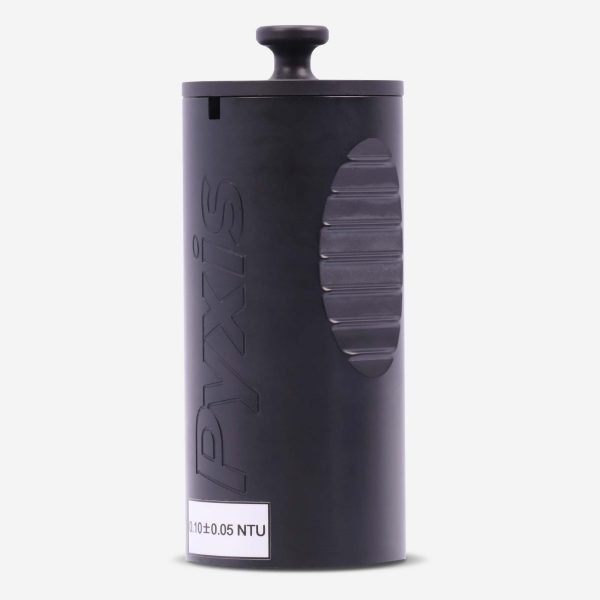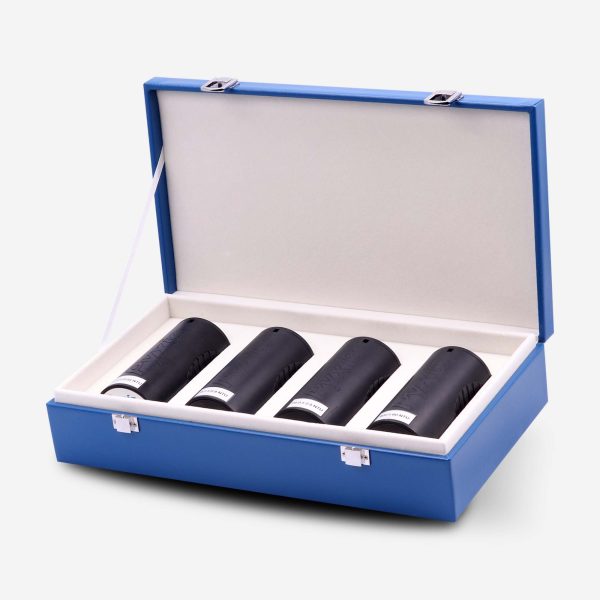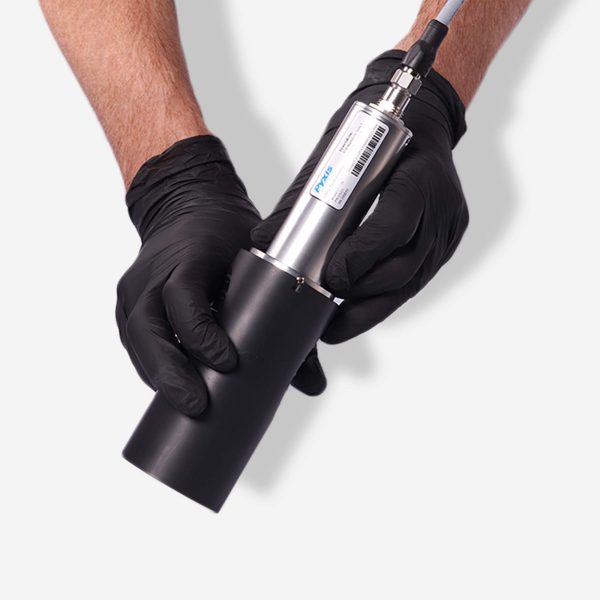LT-SOLID-CAL Series Re-Usable Solid State Turbidity Calibration Kits
Re-Usable Solid State Turbidity Calibration Kits. Pyxis Lab® has developed re-usable solid-state turbidity calibration kits for rapid calibration of the Pyxis Lab® LT-73X Series inline ultra-low turbidity sensors.
Description
Pyxis Lab® has developed re-usable solid-state turbidity calibration kits for rapid calibration of the Pyxis Lab® LT-73X Series inline ultra-low turbidity sensors. The LT-73X Series ultra-low turbidity sensors are factory calibrated with certified Formazin liquid calibration standards. The LT-SOLID-CAL calibration kits represent an alternative to Formazin calibration for routine field calibration only. To calibrate a LT-73X series inline sensor using Formazin, a large quantity of calibration solution must be added to the FR-100 flow reservoir. Perhaps, the most challenging aspect of calibrating an inline sensor is that zero-NTU water is extremely difficult to be prepared outside of a laboratory environment and maybe very easily contaminated by particulate or air bubbles. The solid-state calibration kits provide a consistent and reproducible method to calibrate Pyxis inline LT-73X series turbidity sensors, overcoming the challenges associated with the liquid standard calibration.
Use Method
The sensor should be removed from process flow, cleaned gently with a soft towel, inserted into the appropriate LT-SOLID-CAL adapter and wirelessly calibrated via the uPyxis® Mobile or Desktop APP. Please refer to LT-73X Series Operation Manual for details.
Turbidity Calibration Principals & Considerations
The standard turbidity values of the solid-state adapters are established in our laboratory by matching with their corresponding certified liquid Formazin standards prior to shipment. If the Pyxis sensor is purchased with the solid-state calibration kit, the turbidity values of the adapters are traceable to the Formazin standards. For applications that require accuracy better than 10% of the value and the solid-state calibration kit is not purchased with the sensor, the user can first calibrate the sensor with using Formazin standards and then measure and record the equivalent turbidity values of the solid-state adapters for future calibrations. For applications that do not require better than 10% accuracy, the user can simply calibrate the sensor to the original default values marked on the solid-state adapters. The precision, resolution and the low detection limit are not affected by the calibration method, regardless of using the solid-state or liquid Formazin. The calibration only affects the turbidity sensor accuracy. The nature of turbidity measurement makes an absolute turbidity value not easily obtainable for any sensor manufacturer although proper standards and methods are followed. For example, turbidity values greater than 1.0 NTU measured on real-world samples with different sensors, even from a single manufacturer, could differ significantly. For ultra-low turbidity (less than 0.3 NTU) measurement using the same methods (ISO7027 or EPA 180.1), it is likely that the values from different sensors can agree within 0.05 NTU. As such, the user should choose a calibration method and remain with the same calibration method for consistency. The use of the solid-state calibration is ideal for this situation. For regulatory reporting, especially for ultra-low level of turbidity measurement, it is recommended that the solid-state calibration traceability to the Formazin standards as specified by the regulatory authority be established.


